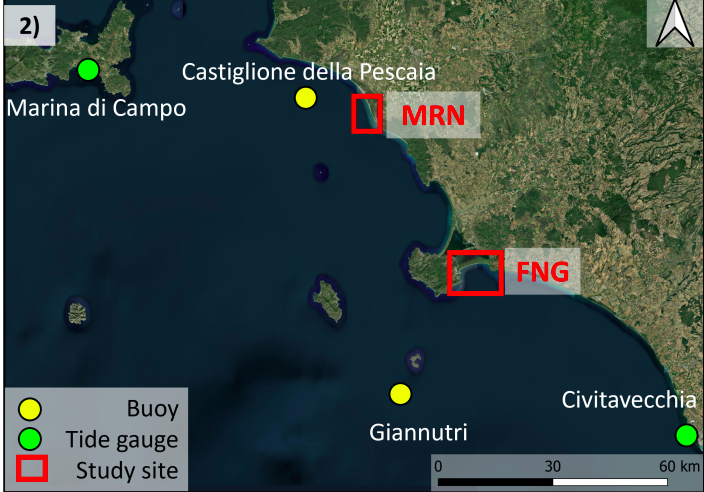Evaluating tidal and wave corrections on shoreline extraction from satellite imagery in Mediterranean micro-tidal beaches
Abstract
Coastal areas are essential for biodiversity, economic activity, and cultural heritage, supporting diverse habitats and protecting inland regions from storm surges and erosion. However, they face increasing threats from erosion intensified by climate change, sea-level rise, and human activities like construction and land reclamation. Accurate monitoring of coastal changes is crucial for effective management to prevent further degradation. The ’instantaneous’ shoreline position, defined as the water-land boundary line visible in the image (Boak and Turner, 2005), is the most commonly used indicator for coastal monitoring. Satellite imagery offers wide spatial coverage and frequent revisit times. Sentinel-2 (S2), with a medium spatial resolution (10 m) and a five-day revisit cycle, has been widely used in coastal studies for detecting shoreline changes and mapping coastal features (Cabezas-Rabadan et al., 2019). PlanetScope ́ (PS) provides even higher temporal resolution with daily imagery, beneficial for monitoring dynamic coastal environments where rapid changes occur (Abdelhady et al., 2022). Natural phenomena like tides and wave action affect the accuracy of shoreline extraction, causing temporal variations in shoreline positions. Incorporating these effects is fundamental to ensure that extracted shorelines reflect the true position. This work aims to (i) evaluate the impact of tidal and wave corrections on the accuracy of shoreline extraction using the automated tool presented in (Angelini et al., 2024), and (ii) provide additional evidence of the methodology’s effectiveness by extending validation to a larger temporal dataset of the same tideless Mediterranean beaches.
Downloads

Downloads
Pubblicato
Come citare
Fascicolo
Sezione
Licenza
Copyright (c) 2025 Fabiana Di Ciaccio, Riccardo Angelini (Autore)

Questo lavoro è fornito con la licenza Creative Commons Attribuzione - Condividi allo stesso modo 4.0.



